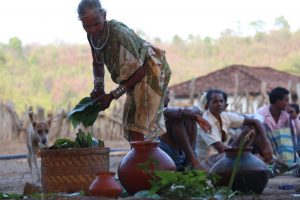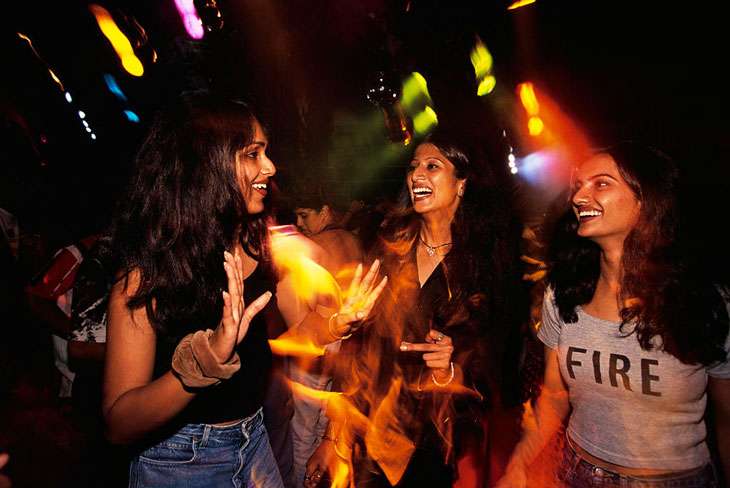How often do women get to drink or smoke in public? How many times do they feel safe doing it? How many times do they feel not being judged? How many times do they not fear harassment, physical or verbal? Every time before taking that extra drink, what are the calculations that women have to make, in an attempt to keep themselves away from any kind of trouble, even though it shouldn’t be a burden they need to carry?
A new Shisha Bar in Berlin, Germany, seems to have found a way out. Started in August, it is a one of a kind bar, where men are not allowed, including the owner of the bar. The women of the city have welcomed this. It is a relief to be away from being observed, to take off the scarfs, to not wear make-up or dress-up, sit and act in a particular way, women say. The bartender, after having worked at several bars in the past, likes it here, as she also does not have to put up with abuses and harassment from men. The idea is to create similar possibilities for women, as men, says the owner, and plans to open more such bars in the future.
In the feminist movement, claiming of the public space by the marginalised groups, one of them being women, have been a long-drawn struggle. Places like the Shisha Bar are victories for the movement. Drinking and smoking have become domains which are considered masculine or appropriate only for men in our patriarchal society. Such places make important political dents in the structure. The public space is designed for men – public toilets, street lighting, parks, shops, and even how the media propagates images of men in the public. Women therefore not only find it difficult to negotiate and be in the public, but also to claim their right over it. Thus, if spaces like the bar are created, they attempt to include women, by creating infrastructure for them.
Designing and creating of infrastructure in the public space for the marginalised groups facilitates their access. Hookah smoking is a social act, a way to unwind. Women out in the public must seem to have a purpose. They must seem busy, with some important work. They cannot loiter. It’s not their space to do so. The importance of women loitering or just ‘hanging out’ thus becomes political in our society, as explained by Shilpa Ranade, Sameera Khan and Shilpa Phadke in their book, Why Loiter?.
women not only find it difficult to negotiate and be in the public, but also to claim their right over it.
The women frequenting the bar are being political as they loiter. Another important thing to note is their challenge to the notions of femininity. Smoking hookah, which is considered masculine, is reclaimed by women. As mentioned earlier, some women coming to the bar do not feel the need to perform femininity, in terms of wearing make-up or behaving in what is considered the ‘proper way’, or even keeping their hijab, thus redefining femininity too.
The bar is part of many victories, and we need more such places around the world. But the fight shouldn’t end here, and here’s why.
Can ‘Safe’ Fun Be Had Only Inside Gated Communities
Our definition of what constitutes the public will help us look at the bar, or places like the bar, more critically. Essentially, a public space is that which has access to all, irrespective of people’s social classes. But, what is the bar at the end of the day? A place for consumption. Thus an important question to address here is who can ‘afford’ to access the bar, regularly. Thus access to the bar demands demonstration of a certain capacity to buy, creating only an illusion of it being public, whereas it is a form of a private space. Thus, as described in the book, these are ‘private spaces masquerading as public spaces’..
The women frequenting the bar say that they feel safe there and can enjoy, as people like them come to the bar. One thing to note is that the likeness is not just in the gender of the people but also class to which they belong. Thus, what essentially is being done is gating of communities. By gating such places, we are not only keeping women belonging to the lower classes out, but also not really ensuring access or control of women of privileged social classes to public spaces, as claimed.
Also read: Women in Public Spaces: Do Public Spaces Only Belong To Men?
To summarise, I’d like to quote from the book, “Limited access to such private-public spaces creates a veneer of access for women, pre-empting any substantive critique of the lack of actual access to real public space. While these spaces might give individual women an opportunity to hang out, it does not in any significant way change the limited nature of women’s access to public space nor does it adequately challenge the dominant idea that women’s proper place is in the private. … If fun is defined as consumption, then surely they do, but if fun includes multiple choices in regard to accessing the public, as well as meeting different kinds of people, then the answer must be more cautious”.
Learning From Other Communities
“Women and men drink alike, in our community. There are no different rules”, says Lalsu Nogoti, who is from the Madia Gond community, from Gadchiroli District in Maharashtra. The Madia Gond community is one of the many Adivasi communities, living in central part of India, the erstwhile Gondwana region. Most of the people depend on forests for their livelihood and food, living in sync with the nature. Brewing liquor from dried Mahua flowers, and consuming it, is a part of the community’s cultural tradition. Mahua is consumed almost every day, by those who prefer it, and by almost everybody on special occasions such as marriage and festivals.
By gating such places, we are keeping women belonging to the lower classes out and only ensuring the access of public places to privileged women
There are no restrictions on women for drinking, and there are no separate spaces for it for men or women in the community. During such celebrations, song and dance is an integral part, along with alcohol. Men and women are drink together, sing and dance, with there being no restrictions on women to stay inside. Everybody offers to refill others’ drinks, and dance with everybody, not considering who is married to whom even. “Gaon mein kaafi log peete hai. Sab saath mein baithke badiya peete hai” (Many people of my village consume liquor. Everybody sits together and drinks) says Saagan Adme of Hudditola village from Balaghat District in Madhya Pradesh, who also belongs to the Gond community.

A person identifying as a woman is preparing the leaves to serve mahua in them for the guests at the wedding. Image Courtesy: Harshit Charles
Drinking mahua is a social act. It is a tradition to open a bottle of Mahua for guests, creating a space to sit, drink and discuss many issues. “Women can sit and drink with not only their husbands, but other men too. They sit together and discuss many things”, says Nogoti. Sitting together and drinking often implies it being inter-generational.
The practice of drinking mahua is also often learnt at home. “Mothers brew mahua and serve it themselves. They often offer it to their sons and daughters”, informs Nogoti. And it is not just mahua that is consumed regularly. Tobacco eating (its leaves) is also a common practice among men and women both. Nogoti further adds, “I’m not saying intoxication of any kind is good. But its people’s choice and blaming women for the choices they make is not a practice here.”
Also read: Smoking Kills, But So Does Patriarchy
Locating Gender Equality In A Broader Context
Our fights cannot be in isolation, and it certainly cannot be for a group of only certain kind of women. Our fight cannot base itself on privileges we have. While it is important to fight within our communities; important that women even are able to create spaces like the bar, we must be able to recognise that the fight it doesn’t end there.
I also feel that there is a lack of willingness to look beyond the mainstream communities for us to learn lessons from. There is a misconception to consider cultures which are largely believed to be ‘modern’ or more ‘developed’ as being more gender equal, whilst ignoring what we can learn from the Adivasi cultures.
In conclusion, I’d like to locate our fight for gender equality in a broader context where our fight is not just against patriarchy but patriarchy that works alongside classism, casteism, capitalism and diverts our progress towards false development.
Featured Image Source: Catch News
About the author(s)
Pragati has been part of PRADAN, an NGO working with women in the Adivasi areas of Madhya Pradesh for the past 3 years. Currently on a break from work, she dreams one day of being able to grow her own food, write exactly what she thinks and read all the books she has collected.





A beautiful article that deals with a global issue and draws parallels between communities culturally and geographically miles apart. As is rightly said here, it is a fight to claim spaces for self and for everyone else too.
This is a very interesting article. Comparing cultural and inclusive aspects what various communities teach us. Time to look into the tribal society, their culture and learn from them.